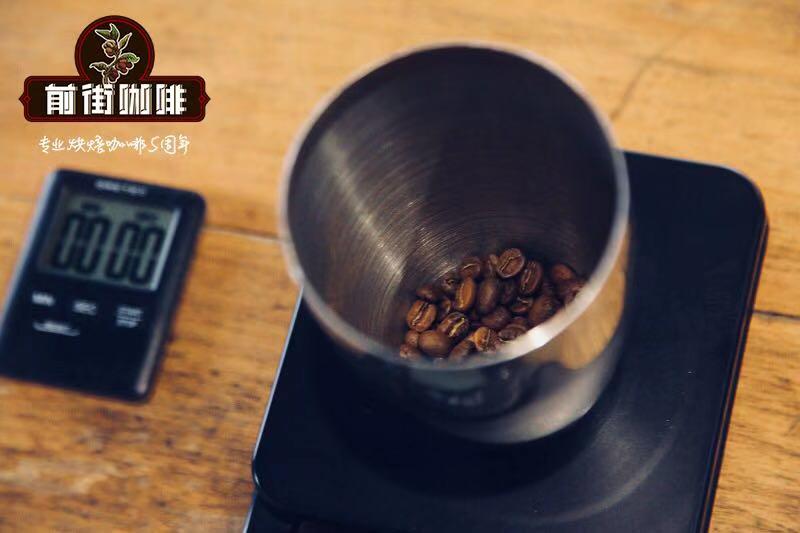Is there coffee beans grown in India? Indian wind stains Malabar coffee flavor characteristics

Professional coffee knowledge exchange more coffee bean information please follow the coffee workshop (Wechat official account cafe_style)
Qianjie-brief introduction of Indian style Malabar Coffee
Indian climate
The ideal climatic conditions for the growth of coffee beans are 23 to 28 degrees Celsius, 1.5 to 2.0 meters of rainfall, and a dry season of 2-3 months after the rainy season. The cold temperature near freezing point is not suitable for growing coffee. Although the rainfall in southern India is less than 1 meter, there are irrigation facilities, temperature and relative humidity are also conducive to the growth of coffee beans.
In India, coffee plants are often affected by fungi. The fungus that most often affects the growth of coffee beans is Hemileia vastatrix, which has no cure. Coffee plants are also affected by a disease called coffee rot, which can cause serious damage to coffee plants during the rainy season.
Indian wind-stained Malabar coffee is one of the most famous boutique coffee beans in the world. His treatment is quite complex and peculiar, mainly due to the complex and unique flavor produced by the interaction between the earth and the sea breeze. The term "wind-stained Malaba" refers to the unique coffee product of its weathered beans treated in Malaba on the west coast of India, where the coffee is transported to all parts of the world after tedious and rigorous wind-stained treatment.
Wind-stained coffee needs to be made with sun beans, and all factories dealing with wind-stained coffee face to the west to meet the salty and wet monsoon blowing from the southwest sea. The coffee beans are spread flat in the wind field, the windows are all open, and the wind stains to a certain extent, and then enter the bag, but because the beans will expand a lot in the process, the coffee beans can not be filled too full, and the coffee bags should not be piled too dense to avoid mildew and spoilage due to lack of wind. It is also necessary to pour out coffee beans and replace sacks from time to time to avoid mold, which is a very time-consuming and labor-consuming project.
The weathering period is about 12 to 16 weeks, and after it is ripe, it will be fumigated to drive out the weevil, and finally the beans will be screened manually to remove the failed beans that have not turned golden. After three to four months of wind treatment, green coffee beans are twice as large in volume and reduced in weight and density.
Although the wind-stained Malabar coffee beans seem to be big and fat, they are soft beans that are strong and dry outside, a change that has taken place after months of weathering. Coffee beans have been exposed to the moist monsoon for several weeks, which not only turns the beans yellow, but also reduces the acidity of the coffee itself, and the taste is very special. In addition to serving as a single product, Indian Malabar coffee beans are also suitable for blending integrated coffee beans.
In short: Qianjie is a coffee research hall, happy to share the knowledge about coffee with you, we share unreservedly just to make more friends fall in love with coffee, and there will be three low-discount coffee activities every month. The reason is that Qianjie wants to make more friends drink the best coffee at the lowest price, which has been Qianjie's tenet for 6 years!
END
Important Notice :
前街咖啡 FrontStreet Coffee has moved to new addredd:
FrontStreet Coffee Address: 315,Donghua East Road,GuangZhou
Tel:020 38364473
- Prev

Unique monsoon treatment method to understand that India can also handle coffee by the monsoon.
Professional coffee knowledge exchange more coffee bean information please follow the coffee workshop (Wechat official account cafe_style) front street-Indian monsoon coffee brief introduction actually India is the oldest coffee producing country in Asia. Although Indian coffee did not flourish until it was colonized by the British in the 19th century, it had a history of about two hundred years before that. In 1870, it was founded by
- Next

What are the characteristics of Arabica coffee grown in India
Professional coffee knowledge exchange more coffee bean information please follow Coffee Workshop (Wechat official account cafe_style) Front Street-about Indian coffee there is very little coffee from Arabica, India, usually there are only two kinds of coffee: wind-stained Malaba and Maso gold bricks. The raw beans of the wind-soaked Malaba are dry, yellow and sweet, but a little monotonous because they are placed in a ventilated warehouse for the Indian Ocean
Related
- Beginners will see the "Coffee pull flower" guide!
- What is the difference between ice blog purified milk and ordinary milk coffee?
- Why is the Philippines the largest producer of crops in Liberia?
- For coffee extraction, should the fine powder be retained?
- How does extracted espresso fill pressed powder? How much strength does it take to press the powder?
- How to make jasmine cold extract coffee? Is the jasmine + latte good?
- Will this little toy really make the coffee taste better? How does Lily Drip affect coffee extraction?
- Will the action of slapping the filter cup also affect coffee extraction?
- What's the difference between powder-to-water ratio and powder-to-liquid ratio?
- What is the Ethiopian local species? What does it have to do with Heirloom native species?

